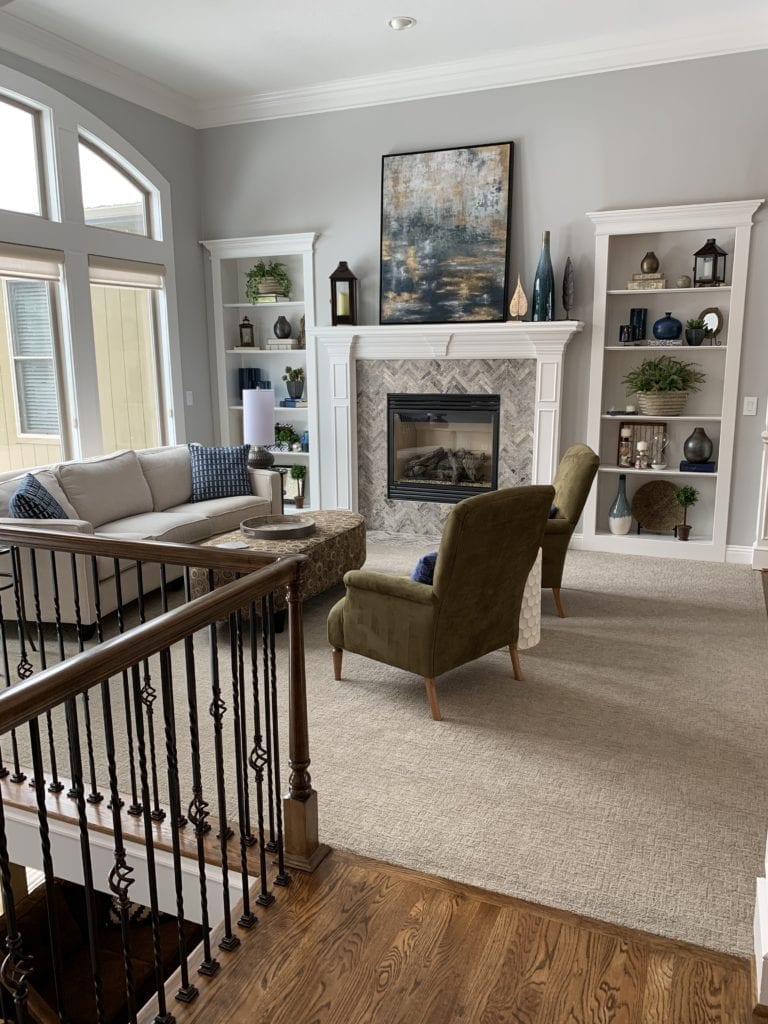
Accessories are an essential part of completing a space. Accessories can sometimes be forgotten, because they are typically at the end of a project. As a designer, I always stress to leave some budget money at the end for accessories.
I follow some general guidelines when accessorizing a space. I start with selecting and placing the larger items like rugs, lamps, pictures, and wall hangings (candle sconces, mirrors, metal art, and wall shelving) first. I then arrange smaller items on built in shelving, cabinets, mantles, counter tops, and tables. I make selections based on design elements: size, color, texture, and material. I believe you should have one piece of greenery in a room to reference nature. The color black should also been on an item to ground the space.

Basement Cabinet Accessorized
There are many tricks to accessorize a room. I use accessories to achieve balance like two matches vases in a bookcase. I throw a fluffy throw blanket on a sofa to introduce texture. I put a large picture over a mantle to create a focal point in the room. I use books to arrange items on a shelf to create different heights and levels of interest. Accessorizing also allows me to introduce blocks of color to a space. A mirror provides reflection and enlarges a space.

Hanging wall accessories is also an art. Many people hire me to hang artwork. First I determine placement on the wall, and then I determine the correct height of the artwork. I always measure from the wire or hook on the artwork to get the correct placement on the wall. Different walls also take different hangers. Experience helps with hanging pictures and other wall pieces to avoid multiple holes in the wall!
I think the most important part of accessorizing is for it to reflect the clients personality. I like to use their books, photos and incorporate important pieces of artwork or family heirlooms to the project. I listen to their likes and dislikes to complete a desirable and comfortable space.



Recent Comments